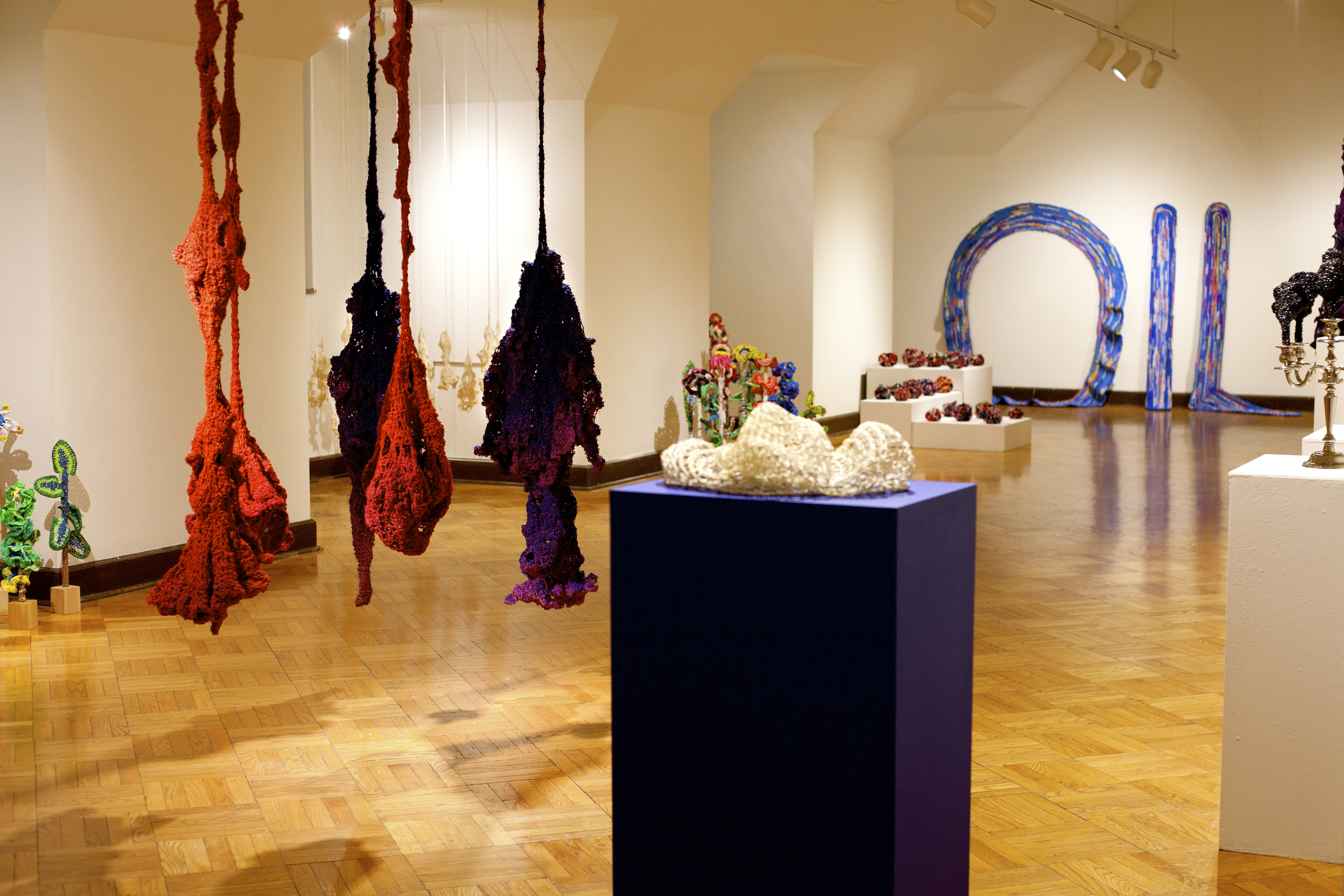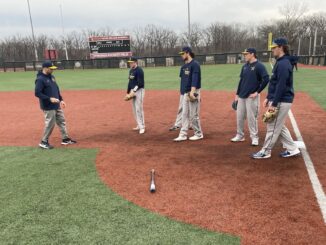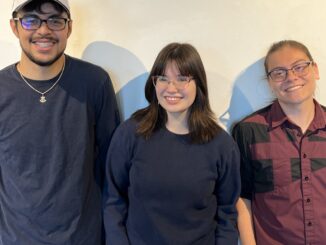
By Melissa Rohman
Until December 15, the O’Connor Art Gallery will be exhibiting the artwork of Chicago artists Jerry Bleem, Brent Fogt, and Jonathan Rockford in a collaborative exhibit entitled Men’s Work: Three Crocheted Perspectives.
The gallery description reads, “Though textile processes are sometimes oversimplified as feminine pursuits, the three featured artists utilize the technique of crochet. Their production reminds us of men’s place in fiber history and that a gendered understanding of that history is only part of the story.”
Jerry Bleem, one of the artists and the co-curator of the exhibit, said, “We don’t remember that history as strongly as we should.” Angela Bryant, Director of Exhibitions and a former art student of Bleem, agreed that they needed to do a parallel kind of exhibition about how fiber processes affects men’s work as much as women’s work. Bleem said: “Collaboration is benefitted through different mediums. What ties it together is the technique of crocheting.”
Jerry Bleem is an artist, writer, professor at the School of the Art Institute of Chicago, Franciscan friar and a Catholic priest. He has examined the cultural construction of meaning by looking at what we discard and by transforming the nonprecious through time-intensive accumulation. Some of his work in the exhibit feature crocheted flowers and plastic bags.
Raised in Texas, Brent Fogt is now a Chicago-based artist. He creates intricate drawings and installations that reference plants, maps and microscopic organisms. His work is impossible to ignore as it hangs boldly from the gallery ceiling.
Chicago artist Jonathan Rockford’s focus was developed through his study of fine art, fibers, sculpture, art and technology and art history. His crocheted ceramics pieces consist of crochet fiber dipped in clay slip and crocheted VHS tapes, to name a few.
Ideas of irony, nationalism and symbolism are represented in this exhibit. Bleem supports this variety of ideas being represented together in a university exhibit, stating, “The best thing we can hope for in college is new ways of thinking for ourselves.”
The purpose of the exhibit is as innovative as the artwork itself. Bleem, Fogt and Rockford want visitors to look at ordinary materials that are assembled with traditional hand processes. Bleem said, “We want people to think about things in new, fresh ways.”
rohmmeli@my.dom.edu



